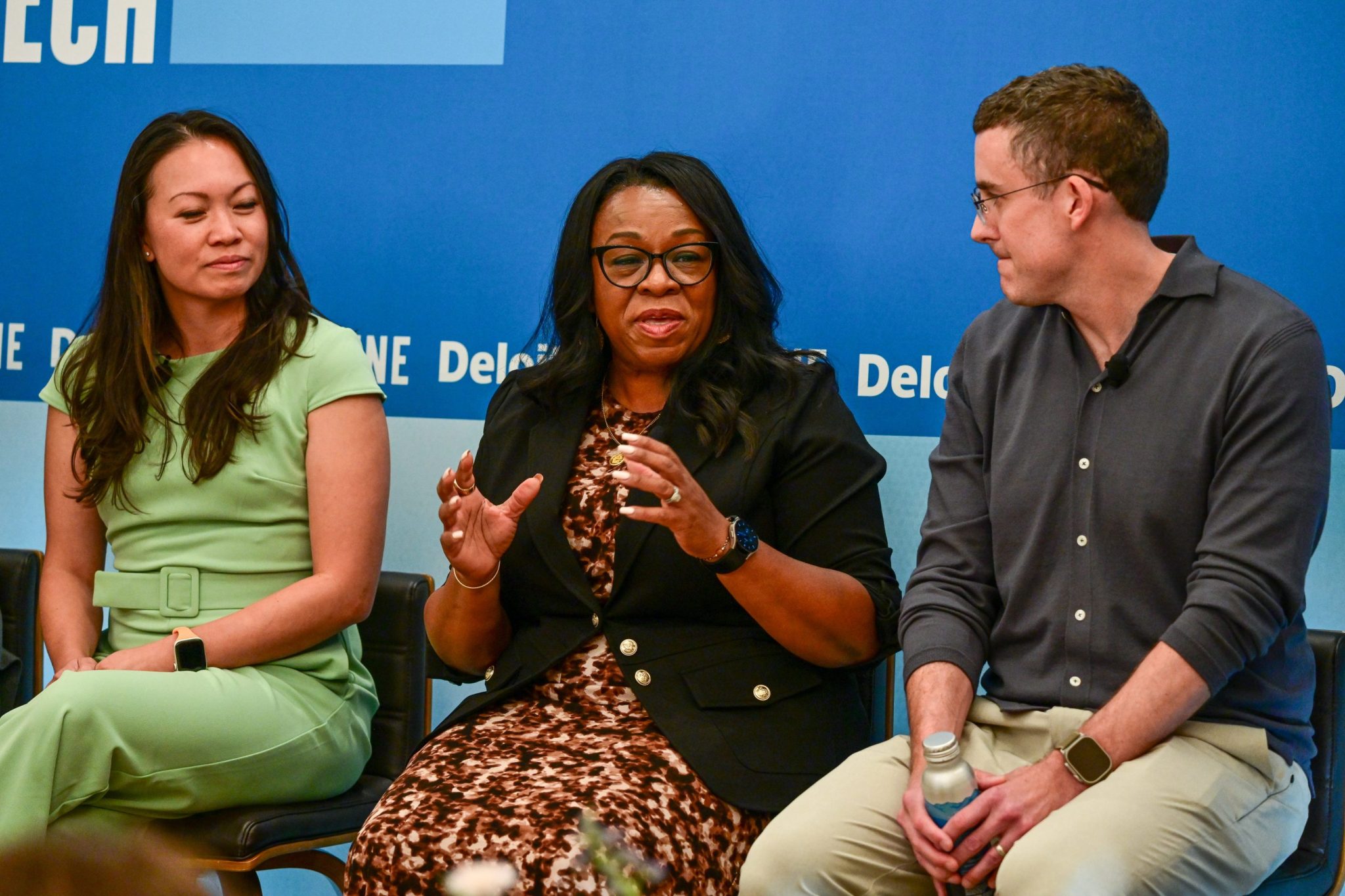
Key takeaways:
- A unified “digital thread” from idea to launch cuts rework, shortens approvals, and improves launch hit‑rates by turning R&D, quality, regulatory, operations, and commercial data into one living system of record.
- Recent industry data shows both urgency and upside: CPG leaders are rapidly adopting AI and digital tools, and new products are a major driver of growth for retailers — evidence that faster, smarter innovation pays.
- Success depends on disciplined collaboration (shared vocabularies, version control, role‑based access), strong IP governance, and KPIs that extend beyond time‑to‑market to include OEE, first‑pass compliance, and mock‑recall time.
- Start small but architect for scale: standardized data layers, modular apps, and role‑based dashboards speed early wins while preparing you for enterprise rollout.
Why now: the speed-risk equation has changed
- In a 2024 McKinsey survey, 71% of CPG leaders said they had adopted AI in at least one business function (up from 42% in 2023). The same analysis documents cases where gen‑AI‑assisted product work cut time to introduce a new product by 60% — a material advantage when cycles are measured in weeks, not quarters.
- Circana’s latest New Product Pacesetters shows that 2024’s top 200 launches generated $8.4 billion in first‑year sales — only 1% of total dollars but 28% of overall store growth — underscoring how outsized the growth impact of successful innovation can be.
- Among more than 300 food and beverage manufacturers surveyed in CRB’s 2024 Horizons: Digital Age of Food Manufacturing, 48% of capital is now directed to automation, with 70% citing productivity as the top benefit — investments that directly support faster iteration and scale‑up.
- The FDA extended the FSMA 204 food traceability compliance date by 30 months, giving industry time to coordinate and exchange structured key data element/critical tracking event (KDE/CTE) data across the supply chain. In addition, recall risks put pressure on innovation teams to build compliance and traceability into designs from day one.
Where food innovation cycles slow down
You may recognize some of these symptoms:
- Fragmented authoring and review: Formulas, specs, labels, and claims live in email and spreadsheets, and version lineage is unclear.
- Late stage surprises: Regulatory, allergen, or packaging constraints surface after pilot runs.
- Disconnected commercialization: Operations teams can’t assess changeover time, allergen washdowns, or throughput impacts until too late.
- Institutional knowledge walks out the door: Prior trials, supplier learnings, and process settings aren’t captured in a searchable system.
“Modern software makes it possible to gather and analyze consumer, market, and operational data in real time. It brings R&D, marketing, and operations onto the same page, which is half the battle.” — Rich Medrano, Practice Director – Revenue Growth Excellence, Catena Solutions.
What the modern innovation stack looks like
Think of a digital thread that connects:
- Front‑end insight: Concept tests, social listening, trend analytics.
- Product authoring: Product lifecycle management (PLM) for formulas/specs, packaging, nutrition/claims; integration to ingredient and regulatory libraries.
- Technical risk and quality: Laboratory information/quality management systems (LIMS/QMS) for trials, certificate of analyses (COAs), hazard analyses; e‑signatures and audit trails.
- Supply and scale‑up: Supplier data, allergens, sustainability attributes, and plant routings.
- Commercialization: Enterprise resource planning/manufacturing execution system (ERP/MES) for run rules, costed bill of materials (BOMs), and changeover standards; demand and financial forecasts tied to product hierarchies.
Design principles that speed the cycle:
- Standardized master data (items, suppliers, allergens, claims) with governance.
- Event‑driven integration (APIs/queues) to keep KDE/CTE context intact for FSMA 204.
- Preserve context (batch, line, spec rev, tester, timestamp) through to costing and KPIs.
- Closed‑loop controls so quality or regulatory events automatically adjust availability, reserves, or launch gates.
Cross‑functional collaboration — and protecting IP — by design
- Common language, faster handoffs: “Modern data platforms help create a common digital language that accelerates collaboration and preserves critical knowledge independent of people,” ifm notes. Storing batch parameters and automating device replacement help teams maintain continuity during personnel change.
- Built‑in intellectual property (IP) governance: Use role‑ and attribute‑based access to separate sensitive formula IP from general project work, plus watermarking, e‑signatures, and immutable audit logs. Tie access to employment status and non-disclosure agreement (NDAs) so knowledge transfer doesn’t become knowledge leakage.
- Right‑sized transparency: Share read‑only specs and KDE/CTE data with suppliers and co‑manufacturers while keeping core formulation logic restricted.
“By consolidating a company’s dispersed knowledge into an easy-to-use system, teams of any size can make informed decisions more quickly and consistently.” — Wes Frierson, VP, Enterprise Solutions, FoodChain ID.
Translating data into cycle‑time gains
- Gen‑AI sprinting: McKinsey documents a beverage company that used gen AI to generate concepts and consumer feedback mining, reducing time to introduce a new product by 60%.
- Faster changeovers and fewer surprises: ifm reports, “We have seen many food and beverage customers leverage better asset health data to improve process control, reduce unplanned downtime, and accelerate line changeovers. One example is a confectionery manufacturer that was able to diagnose production machine issues before they occurred, allowing for repair operations during off-shift hours to avoid impacting production timelines.”
- Streamlining reformulation and compliance: Better data and AI-driven tools evaluate existing products and suggest modifications that balance taste, cost, compliance, and performance,” adds FoodChain ID’s Frierson. “By flagging risks early, software reduces back-and-forth between departments, shortens review cycles, and ensures products meet requirements the first time. This not only accelerates reformulation but also frees up resources for more forward-looking innovation.”
From raw signals to “R&D‑ready” insight
- Unify the corpus: Centralize concepts, formulas, trial data, supplier specs, and historical lessons in a searchable system. Keep everything linkable to projects and SKUs.
- Instrument your trials: Capture yields, sensory scores, shelf‑life, and plant changeover metrics in structured fields, not slide decks.
- Automate compliance: Pre‑screen ideas and specs against market rules, claims policies, and labeling standards; auto‑generate dossiers for regulatory review.
- Run the digital twin: Simulate cost of goods sold (COGS), throughput, and allergen cleaning impacts before committing to scale.
- Close the loop: Feed early sales velocity, retailer feedback, and complaint data back into the formula/spec to guide fast reformulations.
“That combination — better data, better tools, and better alignment — helps companies move faster and launch products with a much higher chance of success.” — Rich Medrano, Practice Director – Revenue Growth Excellence, Catena Solutions.
What the C‑suite wants to see — and how to measure it
Beyond time‑to‑market, track a tight set of indicators that connect innovation to business outcomes:
- Concept‑to‑spec cycle time and spec change cycle time
- First‑pass compliance rate (regulatory and label approvals)
- Trial‑to‑approval ratio and iteration count to formula freeze
- COGS at launch vs. target; variance at 30/60/90 days
- Mock‑recall time (KDE/CTE retrieval) and audit‑ready data completeness
- Plant readiness: changeover time, allergen washdown time, and OEE (availability, performance, quality) as the operational backbone of innovation ROI.
- In‑market leading indicators: early velocity vs. pacesetter benchmarks and targeted distribution actual cash value (ACV) — useful context given Circana’s evidence on how top launches drive disproportionate growth.
“R&D often involves collaboration across quality, procurement, regulatory, legal, and manufacturing. AI‑driven platforms reduce this friction by surfacing relevant insights at the moment of decision‑making.” — Wes Frierson, VP, Enterprise Solutions, FoodChain ID.
Building the business case (and keeping it)
- Start with a pilot and a quantifiable goal: Pilot with a clear metric (e.g., “cut formula‑approval cycle time by 30%” or “reduce changeover by 15%”) and evaluate scalability from day one.
- Standardize the data layer: Establish canonical items, suppliers, allergens, claims, and test methods used by PLM, LIMS/QMS, ERP, and MES.
- Modular, scalable architecture: Favor components you can expand across lines and plants without refactoring (APIs, event streams, cloud services).
- Role‑based dashboards: Give R&D, quality, regulatory, ops, and sales a shared source of truth tuned to their decisions.
- Security and compliance by default. Enforce least‑privilege access, e‑signatures, and tamper‑evident audit logs. Plan for FSMA 204 KDE/CTE exchange even with the extended deadline.
Done well, better data doesn’t just speed launches — it raises hit‑rates and de‑risks scale‑up. With digital and AI adoption rising across CPGs, and evidence that top launches punch above their weight in growth contribution, the competitive window is open for food manufacturers who wire their innovation cycles for speed and rigor.

Credit: Source link













